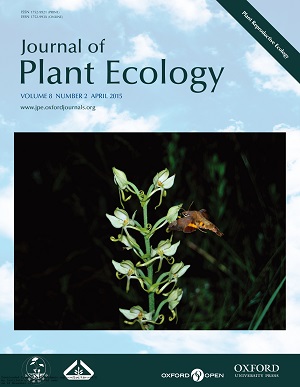Current Issue
-
 Volume 8 Issue 2
Volume 8 Issue 2
A hawkmoth Macroglossum variegatum (Sphingidae) sucking nectar from an alpine terrestrial orchid Habenaria glaucifolia, showing pollinia attached to the base of its proboscis. Pollinators for this greenish white flower with a long spur are predicted to be longtongued moths, pictured by Chang-Qiu Liu at Shangri-La Alpine Botanical Garden, southwest China. See Ying-Ze Xiong, et al. in this issue.
IF: 3.9
CiteScore: 5.7
CiteScore: 5.7
Editors-in-Chief
Yuanhe Yang
Bernhard Schmid
Yuanhe Yang
Bernhard Schmid
CN 10-1172/Q
ISSN 1752-9921(print)
ISSN 1752-993X(online)
ISSN 1752-9921(print)
ISSN 1752-993X(online)







